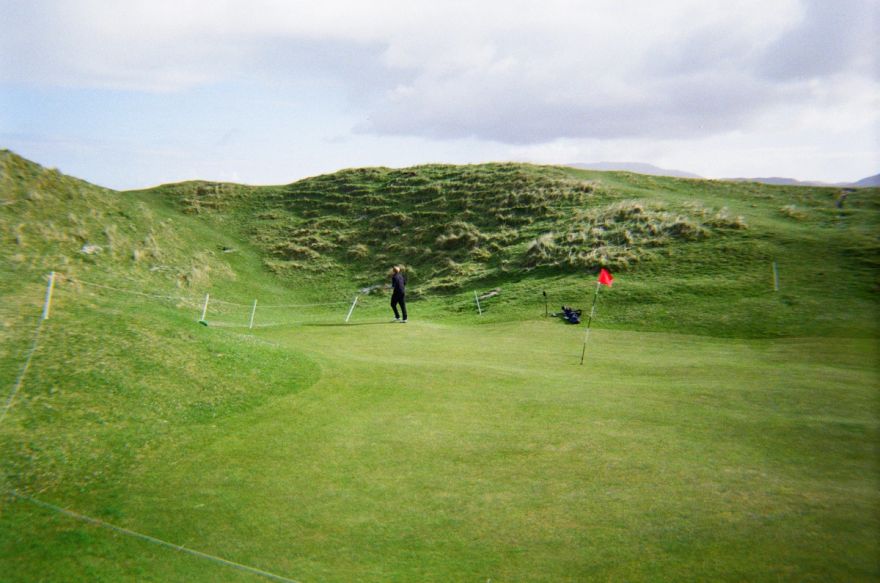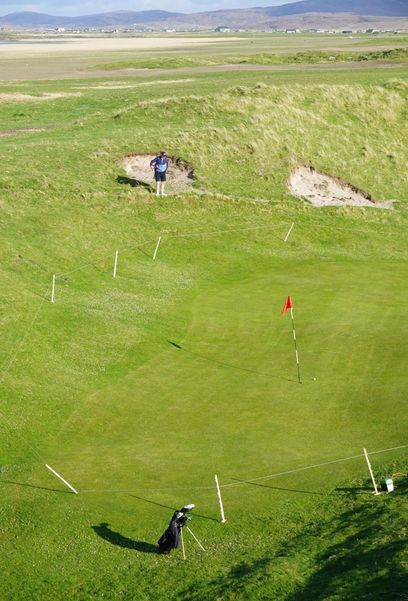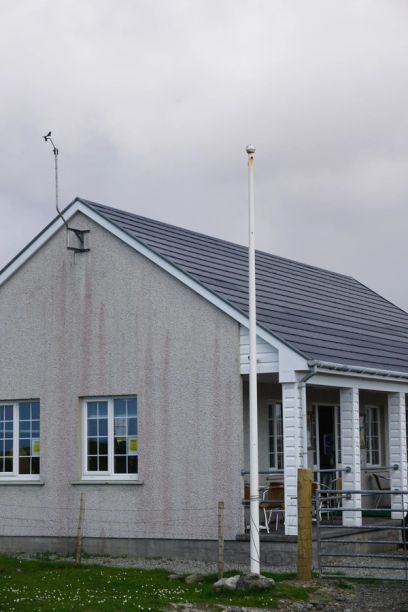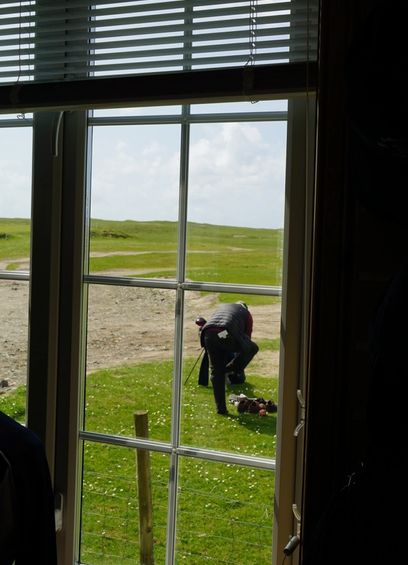
Askernish
The cattle, wandering in circles, have morphed the mounds of Askernish into meringue style peaks.
Two of these delicious forms frame the 7th fairway. It's the best hole on the course. Correction.
It’s the best hole I’ve ever played.

The fairway pours down from the tee like the unravelling of a floral tapestry. Dense and heavy, the fabric tucks itself neatly into the subtle compressions of the underlying topography, filling the uneven spaces at the base of the Machair dunes.


After navigating a harsh westerly wind from the tee, you descend into the trough where the fairway begins. Protected by towering dunes, the volume drops and the temperature increases, like rushing indoors from a storm. The daisies, so densely sprinkled across the turf, reflect the light back upwards. Looking towards the sky from the tranquillity of the basin, you can sense the Atlantic breeze rushing overhead.

Down here though, in the trough, things are moving a little slower. The sun breaks from behind the clouds, casting shadow on the north facing sides of the fairway moguls. Your breath slows. The Freddy couples tempo you’ve drooled over for decades courses through your veins. Down here, you embrace bad bounces with the stoicism of a Tibetan monk. Down here, the tranquillity of the Outer Hebrides is visceral, infectious. The distant muffled waves, the dampened wind and the fleeting window of sunlight creates a dream-like quality. If you can’t make birdie here, now, you might never make one again.

Resisting the urge to settle down for a picnic on the rolling pastures, you send your approach shot skyward, forcing it to poke its head above the dunes. The green, banked at the rear invites you in, like throwing a tennis ball into the corner of a sofa.

This golf course has existed for as long as the land itself. In fact, there is very little distinction to be made. Old Tom Morris laid it out in 1891, and with limited machinery the holes were routed through the dunes with minimal intervention.

But remote island life made upkeep difficult. Decades after the course was designed, it was engulfed by wilderness again. The course lay dormant, beneath the dense marram grass until Gordon Irvine caught wind of the site in December of 2005. Assembling an expert team including Martin Ebert and Tom Doak, they reestablished the original Old Tom layout.

Leaving from Kings Cross in London, it would take you approximately 33 hours by train and boat, to reach the 7th tee at Askernish (and thats without playing the first 6 holes). In fact, as the golf ball flies, the course is almost equidistant between the south coast of Iceland (917km) and Royal St George’s (879km).
I know what you’re thinking. It's a long way to go for a game of golf. But that's exactly why you should go. Those soft city folk friends of yours wouldn’t dare book 2 CalMac ferries into the extremities of the Scottish Wilderness, and therein lies the opportunity.


The potential to boast to your risk averse friends about the intricacies of Old Tom’s original Hebridean vision (they won’t understand anyway) is an irresistible prospect. But there is far more at stake here than some juvenile one-upmanship.
Such dramatic, glaciated, lunar style landscapes exist in very few places on earth. And this is one of them. Bright white beaches give way to electric blue water. The Isle of Barra holds firm in the hazy distance. This level of freedom exists only with extreme isolation.

But the Lord giveth, and the Lord taketh away. Everything that makes the Outer Hebrides so visually stunning is also what makes it so inhospitable: acidic, peat laden soil, gruelling winters and unforgiving rock formations. Bad for quarterly turnover, great for adventurers. You see, an untouched Old Tom Morris linksland doesn’t retain its authentic magic if it's just outside the M25. It gets tinkered and tweaked, invested in and commercialised.


The small clubhouse, the cattle grid that leads to the first tee, the absence of fertilisers and pesticides, the cow shit on the fairways. It acts as a portal into a bygone era. The lack of commerciality has expertly preserved the nature of Askernish.


A journey to the edge of Scotland is a daunting prospect for some, but for those of you curious enough to venture into the unknown, I salute you. The pay off for your efforts will be exponentially greater because of the miles covered to get there.
